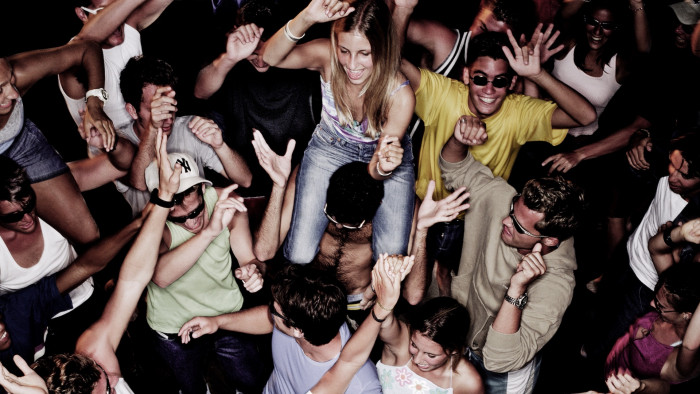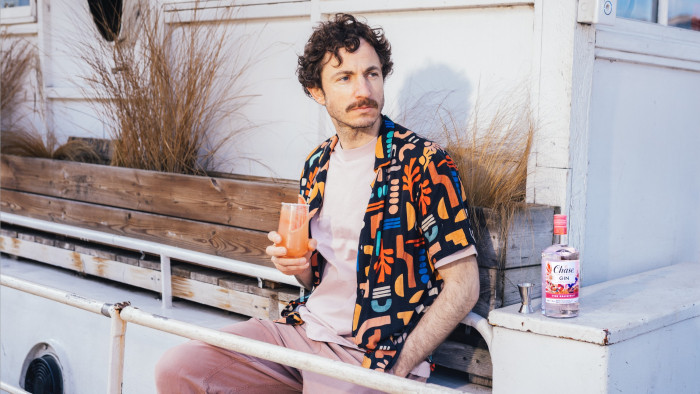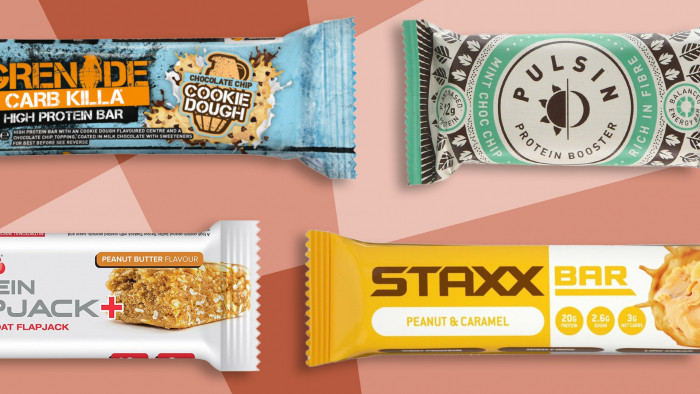Why are we obsessed with massive blokes?
Bulging muscles. Terrifyingly tall. Getting to the bottom of our fascination with totally huge men


It’s 4 April 1993. Wrestlemania IX is nearly over. Bret Hart is the WWE (then WWF) world champion. He’s an athletic 6ft in a hot pink and black leotard, and he’s sitting in the changing room, waiting for his match. Cue Hulk Hogan, the superstar, back in the fold after a few years out making movies.
Hogan comes over – 6ft 6in, swaggering, yellow feather boa slung around his neck; looking like Sesame Street’s Big Bird re-imagined as a polished mahogany human – and puts one of those 24in python arms around Bret’s shoulders. Hart is wrestling’s smallest and most popular main-event wrestler, with the previous decade dominated by men the size of dump trucks, but it’s just been announced backstage that Hogan will be walking away from the event as the new title-holder, and Hart is furious.
“Brother,” says Hogan, “you’ll never be a true champion. You’re just not big enough.”
Harsh. But maybe that giant orange weirdo was on to something. As a society, we can’t help but conflate large with good, huge with best, and elevate the truly immense who inspire camera flashes with their sheer enormity to the status of gods. But, the question remains, why?

Bigger is better
Let’s be clear: when we say “big” we don’t mean big like that guy in your office with the tribal bicep tattoo and collection of tight black T-shirts. And we don’t mean big like Robert Wadlow (at 8ft 11in, the tallest man who ever lived), who suffered from hyperplasia, a disease that affected his pituitary gland – the pea-sized gland that controls the body’s growth and development – and who died aged 22.
We mean guys like Dwayne ‘The Rock’ Johnson – the world’s highest-paid film star; 6ft 5in with an ever-expanding arsenal of muscles – and Arnold Schwarzenegger – former Mr Universe and eternal pop culture icon. These are men as monolith icons to human curiosity.
“Contemporary Western societies do their best to ignore sex differences but, biologically, males and females are different down to every cell of their body,” says University Of North Park sociology professor Michael O Emerson. “‘Maleness’ means being physically larger and stronger than ‘femaleness’. Extremely large men represent this archetype in the absolute extreme. They are somehow seen as more male.”
Research suggests it started with the Ancient Greeks. Their obsession with war pushed the idea that men should be grand machines of destruction, despite (or, perhaps, because of) the average height for men of the time being about 5ft 3in. The 6th-century BC strongman Bybon, son of Phola, was famous for lifting a 316lb block of red sandstone over his head with one hand. And in that same century, we have Greek wrestler Milo Of Croton. While his feats of strength were celebrated, so was his diet: it’s said he devoured 20lb of meat, 20lb of bread, 18 pints of wine and a healthy consumption of rooster gallstones. True or not, two millennia later, when Googling his name, “Milo Of Croton workout” is the third result.

A gold medal in size
In an Olympic year, our obsession with epic largeness is even more plain to see. Check out the fawning around Usain Bolt – 6ft 4in with fortysomething-inch legs – the Jamaican looks positively alien in an event usually dominated by the short and stocky. And have you ever watched the weightlifting? Ultra-beefy men with round, red faces, necks thicker than their heads, and bodies that look to have been made by a car compactor. Competitors include double Olympic gold medalist and super-heavyweight world record holder Hossein Rezazadeh, known as ‘Iran’s Hercules’, who must be at least part-bison. One look at a guy like that makes you think, “Maybe those old Greek lads were on to something…”
When we meet Mitch Gosling, a champion bodybuilder and personal trainer, outside St Paul’s station, he stands out. “Everyone always notices my legs first,” he says over a strictly regulated lunch. His legs are huge in shorts, and his calves look like prize hams. “If I’m walking around the city and my veins are bulging, you watch people stop and stare,” he says. “They’re just mesmerised, mate. I’m like a statue.”
Where does he think this fascination with size comes from?
“What it all adds up to is a representation of the human physique as, like, your ideal. And it becomes something otherworldly. Even when I’m just sitting down having a coffee, people walk past and look at me like, ‘F*cking hell.’ You get someone who doesn’t look like anyone they’ve ever met before and people are going to pay attention.”
Standing 6ft 4in with 22in biceps and a back roughly the size of a sofa, 50-year-old Grenadian-British strongman Mark Felix is also familiar with being the centre of attention.
“I’m that big guy you don’t want to have to sit behind at your kid’s school nativity play, you know?” he tells us. “I understand what it’s like for people to stare at you. The hardest thing for me is buying clothes. I have to pretty much just live in my gym gear because trousers won’t fit me. I can’t get shirts to fit over my arms or my lats.”
Felix is a regular competitor at the World’s Strongest Man event and a master of grip competitions, where you have to lift as much heavy stuff as you can with just your fingers.
Out of season, Felix is a plasterer in Blackburn – one who just happens to eat 7,500 calories across six meals a day.
“Everyone wants to be strong,” he says. “It’s a good trait. It’s exciting. If you look back at the weights we were lifting 10 years ago to what we are now it’s almost like we are evolving as a species. Is there a limit to what we can lift? I don’t know, we haven’t reached it yet. Until then I think strongman will always be popular.”

The dark heart of henchness
For British men and women of a certain age, Gladiators was their first brush with the enormous bloke phenomenon. The early Nineties ITV gameshow-cum-combat sport made heroes of supremely buffed-up, spandex-clad athletes with absurd nicknames.
One of the aforementioned athletes was Rhino (real name, disappointingly, Mark Smith). As soon as he burst on to our screens 21 years ago, his massive size announced him as a star.
“It was unreal,” says Smith from LA. “I was the new Gladiator to replace Shadow, who looked amazing. I was this new black guy, with green eyes and a big smile – very friendly – but also an animal in competition…”
This last part – which Smith would not go into – remains troubling. It’s hard to look past the fact that, for centuries, there has remained a racist undercurrent to the obsession with big men. At the start of the 20th century, The New York Times and other newspapers ran an astonishing number of stories referring to “giant negroes” that terrorised (predominantly white) areas, and were finally felled by “heroic” (inevitably white) cops. ‘Insane Giant Negro In Newark!’ screams one. ‘Armed Negro Giant Goes Mad On Liner’ warns another. Reporters described their movements as “primitive”, their strength as “animalistic”, their motives as “savage”. And studies have shown modern sports commentators usually remark on intellect-related qualities for white players, but physical qualities for black players. Just think how many times you’ve heard a black midfielder referred to as a ‘beast’ on the pitch...

Legacy of the beefy boys
One man that has arguably had more influence than any other on establishing the pre-eminence of big men in modern culture is Steven E de Souza. The writer of films such as Commando, Street Fighter, The Running Man and Die Hard, he set the bar high when it came to scripting hulking muscleheads.
Where does he think that lust for largeness came from? “The Eighties’ expansion of both the action genre and the pecs of its stars were subconscious compensation for the perceived failure of the US’s war in Vietnam,” he explains. “Bigger, badder heroes had to make up for the humiliation of a well-publicised war that had no clear victory.”
Perhaps that’s been the case all along. Each of us exists in a world where disaster and disappointment lurk around every corner, so why wouldn’t we want to place our hopes in the muscular hands of a silver screen demigod in camo face paint?
“In the end,” says De Souza, “Desert Storm and the collapse of the Soviet Union ended the psychological craving for macho overkill and finally opened the door for a generation of more normal-sized heroes.”
And maybe that’s true, but from The Expendables to The Rock, modern culture just can’t leave beefcakes behind for good. For all the ‘army of one’ fantasy and near-pornographic muscle definition, they remain oddly relatable.
They are a manifestation of man’s most base desires – to be a winner, to inspire awe, to exact sweet and bloody revenge – rendered whole and awesome and huge. And what’s more human than that?
Image credits: Rex/Getty
Latest


Ten things you need to know about Hyrox


Is clubbing actually good for you? We asked an expert


Horticulturist shares tips on how to urban garden
Related Reviews and Shortlists


Best gifts for runners that they'll actually want and use





